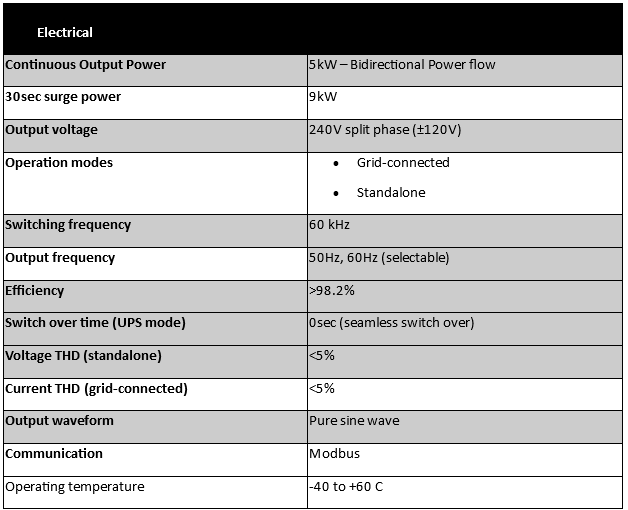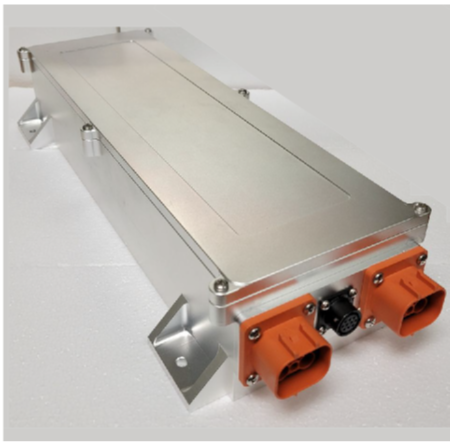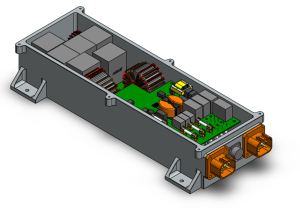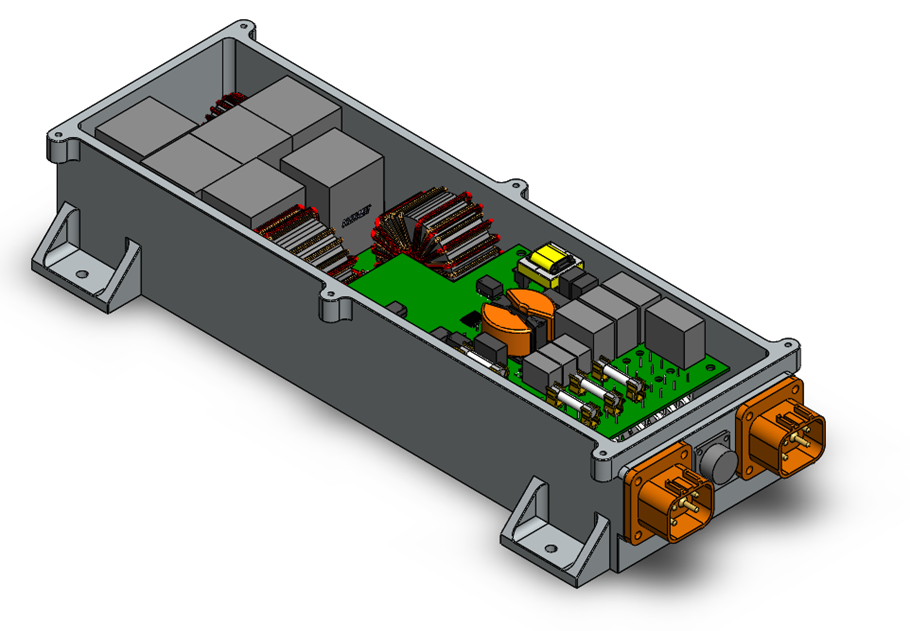A 5kW single-phase inverter is an electrical device used in solar power systems (or other renewable energy setups) to convert the direct current (DC) generated by solar panels into alternating current (AC), which is used to power household appliances or fed into the grid. Here’s a detailed breakdown:
- Power Rating (5kW): refers to the power rating of the inverter, meaning it can handle up to 5000 watts (5 kilowatts) of power at any given moment. This rating determines the maximum amount of electrical power the inverter can supply. For example, if your solar panels produce 5000W of power, a 5kW inverter can convert all that power from DC to AC without any issues.
- Single-Phase: means the inverter is designed to work with a single-phase power supply. In most residential settings, the electricity supplied by the utility company is single-phase, which involves one alternating current (AC) waveform. This type of system is simpler and is typically used in homes and small businesses. The single-phase power system typically operates at a voltage of 230V (in many countries) or 120V (in countries like the U.S.), and it delivers power in a single alternating current.
- Functionality:
- DC to AC Conversion: The primary function of the inverter is to convert DC power (which comes from solar panels or batteries) into AC power, which is used by household appliances or sent back to the electrical grid.
- Synchronization: The inverter also synchronizes the frequency and phase of the AC output with that of the local grid (usually 50 Hz or 60 Hz), ensuring the power can be safely fed into the grid or used by your home’s electrical system.
- Efficiency: Most modern inverters are highly efficient, often converting more than 95% of the DC power into usable AC power.
- Grid-Tie vs. Off-Grid
- Grid-Tied Inverter: A 5kW single-phase inverter can be grid-tied, meaning it works in conjunction with the utility grid. Excess electricity produced by your solar panels can be fed back into the grid, potentially earning you credits or payments from your utility company.
- Off-Grid Inverter: Alternatively, it could be used in an off-grid system where the inverter works independently of the grid, often in conjunction with battery storage. It manages the power from the solar panels and battery to ensure continuous power supply.
- Additional Features
- MPPT (Maximum Power Point Tracking): Most modern inverters come with MPPT technology, which optimizes the power output from your solar panels by adjusting the load to find the optimal point at which the panels produce the most power.
- Monitoring: Some 5kW inverters include monitoring systems that allow you to track power production, consumption, and other metrics through a web interface or mobile app.
- Applications
- Residential Use: A 5kW inverter is typically suited for a small to medium-sized home. It can power essential household appliances and possibly some additional devices, depending on the energy needs.
- Small Businesses: It’s also suitable for small businesses with moderate power needs.
- Installation
- Connection: The inverter is usually installed between your solar panels (or battery storage system) and your home’s electrical panel. It requires careful installation to ensure safety and compliance with local electrical codes.Cooling: Inverters generate heat during operation, so they typically have heat sinks or fans to dissipate this heat, ensuring reliable operation.
- Cost and Lifespan
- Cost: The cost of a 5kW single-phase inverter can vary depending on the brand, features, and efficiency. Generally, they can range from a few hundred to a couple of thousand dollars.Lifespan: Most inverters have a lifespan of around 10-15 years, though this can vary depending on usage and environmental factors.This type of inverter is a common choice for residential solar power systems due to its balance of power capacity, efficiency, and cost.
Key Features:
- Hybrid inverter operating modes: Standalone, Grid connected
- Seamless mode transition
- Pure sin wave inverter: Voltage harmonic rejection with non linear loads
- Computer interface through RS485
- High inrush current capability for motor loads
- Can be connected in Parallel on ac side to achieve higher power capability
- Remote on/off controller
- Output current limiting up to short circuit
- Fault Ride Through (FRT) capability
- compact, rugged and IP67-rated





